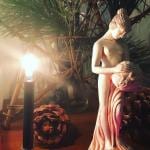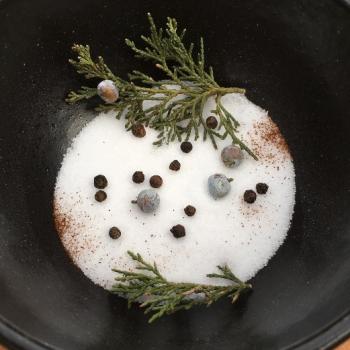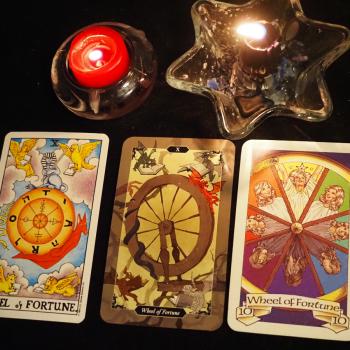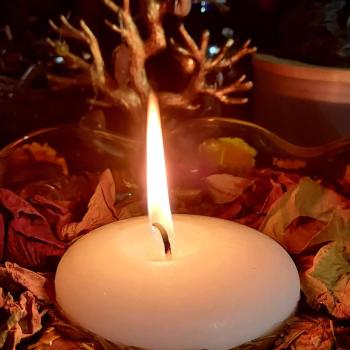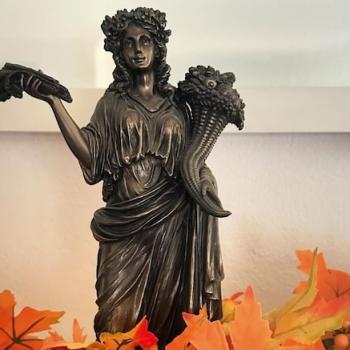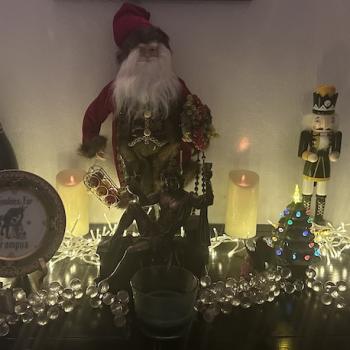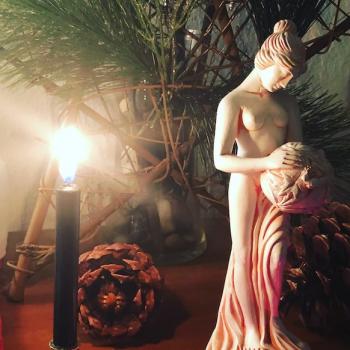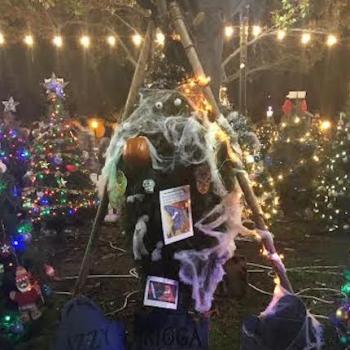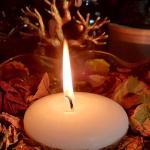The Yule Log of today takes several different forms. For some it remains what it’s been in ages past: the primary piece of wood in a cheery Yuletide fire. At my house our Yule Log is decorative; a slab of wood with space drilled into it for some tea-light candles and adorned with holiday decorations. Many folks honor the Yule Log as the “bûche de Noel,” an edible treat decorated to resemble a piece of wood. Services like Netflix offer our televisions and computer screens “streaming Yule Logs,” providing the warm glow of a fire without needing a fireplace. Because of these various permutations the Yule Log is probably far more popular today than ever before, but few people realize just how important it once was at Yuletide.
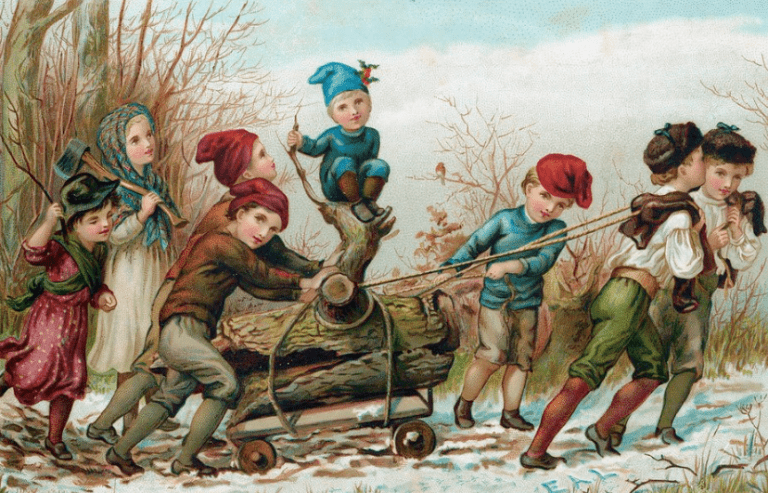
For centuries the Yule Log was one of the centerpieces of Christmas and Yule celebrations. The first recorded reference to the Yule Log dates all the way back to 1184 in Germany, and given that date, it’s likely that the Yule Log as a custom is far older than that, and probably predates the adoption of Christianity in Germany. From Germany the custom of the Yule Log spread throughout Europe and was firmly established in England by the early 1600’s when it first shows up in the written record. Shortly thereafter the custom reached North America, and it’s been a part of Western holiday traditions ever since.
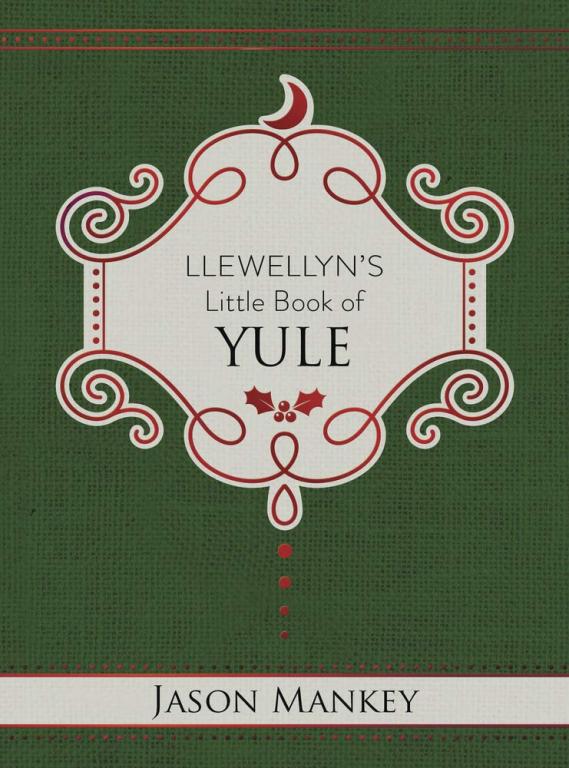
Yule Log traditions vary across Europe and the Americas, but for centuries simply gathering the Yule Log was seen as an extremely important activity. In England the Christmas Day Yule Log was selected on the holiday of Candlemas (February 2) and then set out to dry until its use eleven months later! In other parts of Europe families would wake up with the sun and seek a Yule Log in the early morning hours on Christmas Eve. In Norway it was customary for the male head of the household to find the Yule Log on his own.
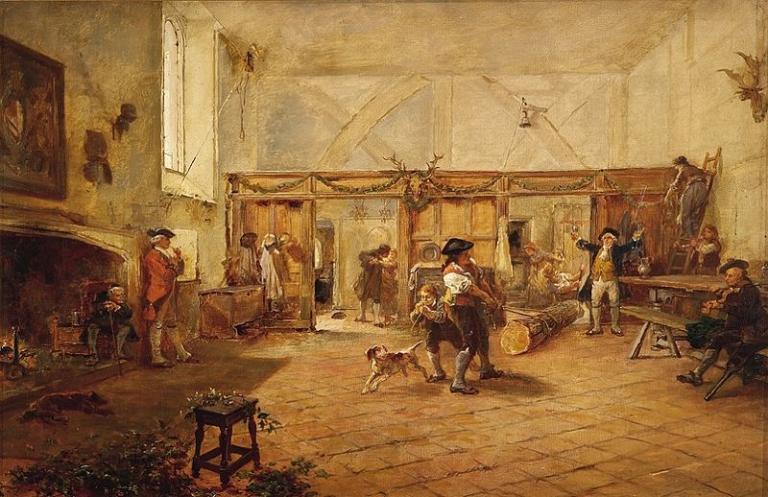
Simply dragging the Yule Log home was a cause for celebration in many places. Yule Logs were decorated with ribbons as they were drug home in the snow or mud, and small children were sometimes permitted to “ride” on top of the Yule Log as others labored. Those not intimately involved in the transport of the Yule Log often cheered on those who were, making the entire exercise festive.
Once inside the home the Yule Log often had to be ceremonially placed on the fire. Often that meant dousing the Log with wine or grain for health and prosperity in the coming New Year while a prayer or blessing was spoken. In Newfoundland Canada, once the log was set into the hearth, it was customary to celebrate by shooting a gun outside as a way of sharing Yule Log success with the neighbors. On certain American plantations in the pre-Civil War South, slaves were free from work for as long as the Yule Log burned. For this reason the Log was often heavily sprinkled with water so that it would burn longer.
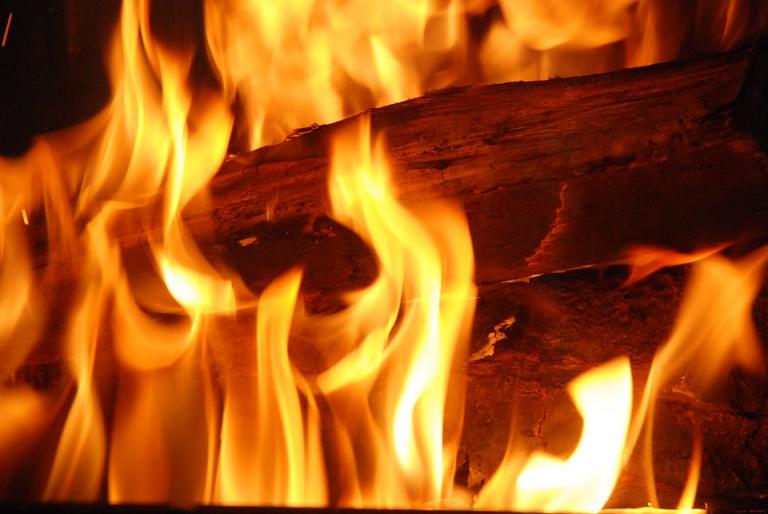
In many households it was customary to kindle that year’s Yule Log with the ashes or remnants of the previous year’s Log. But the ashes of the Yule Log were important for a variety of magickal reasons as well. In some areas they were used to cure diseases in cattle, prevent mildew on crops, fertilize soil, and relive tooth-ache pain. Ashes thrown into a hearth were believed to drive off life-threatening storms and protect against bad weather.
In Germany, the Christbrand was a piece of wood similar to the Yule Log, but instead of being allowed to burn completely, it was taken out of the fire once lightly charred. This piece of wood was kept around the rest of the year and thrown into the fire anytime bad weather threatened. In Scotland the Cailleach Nollaich (or Christmas Old Wife) was a tree stump or large root carved to resemble the head of an old woman. The carved root/stump was symbolic of evil and thrown into the household fire on Christmas Eve where it was allowed to burn down completely. It was believed that burning the Cailleach Nollaich would keep negativity and harm away for the coming year.
Excerpted and adapted from Llewellyn’s Little Book of Yule
Find Jason Online
Llewellyn’s Little Book of Yule
Transformative Witchcraft: The Greater Mysteries
The Witch’s Wheel of the Year: Circles for Solitaries, Circles, & Covens
Raise the Horns on Facebook Jason’s Twitter
Pictures Of My Cats & Sunflowers on Instagram
Witches, Whisky, & Wit (Podcast)
The Witch’s Wheel of the Year: Circles for Solitaries, Circles, & Covens
Raise the Horns on Facebook Jason’s Twitter
Pictures Of My Cats & Sunflowers on Instagram
Witches, Whisky, & Wit (Podcast)
Pictures Of My Cats & Sunflowers on Instagram


